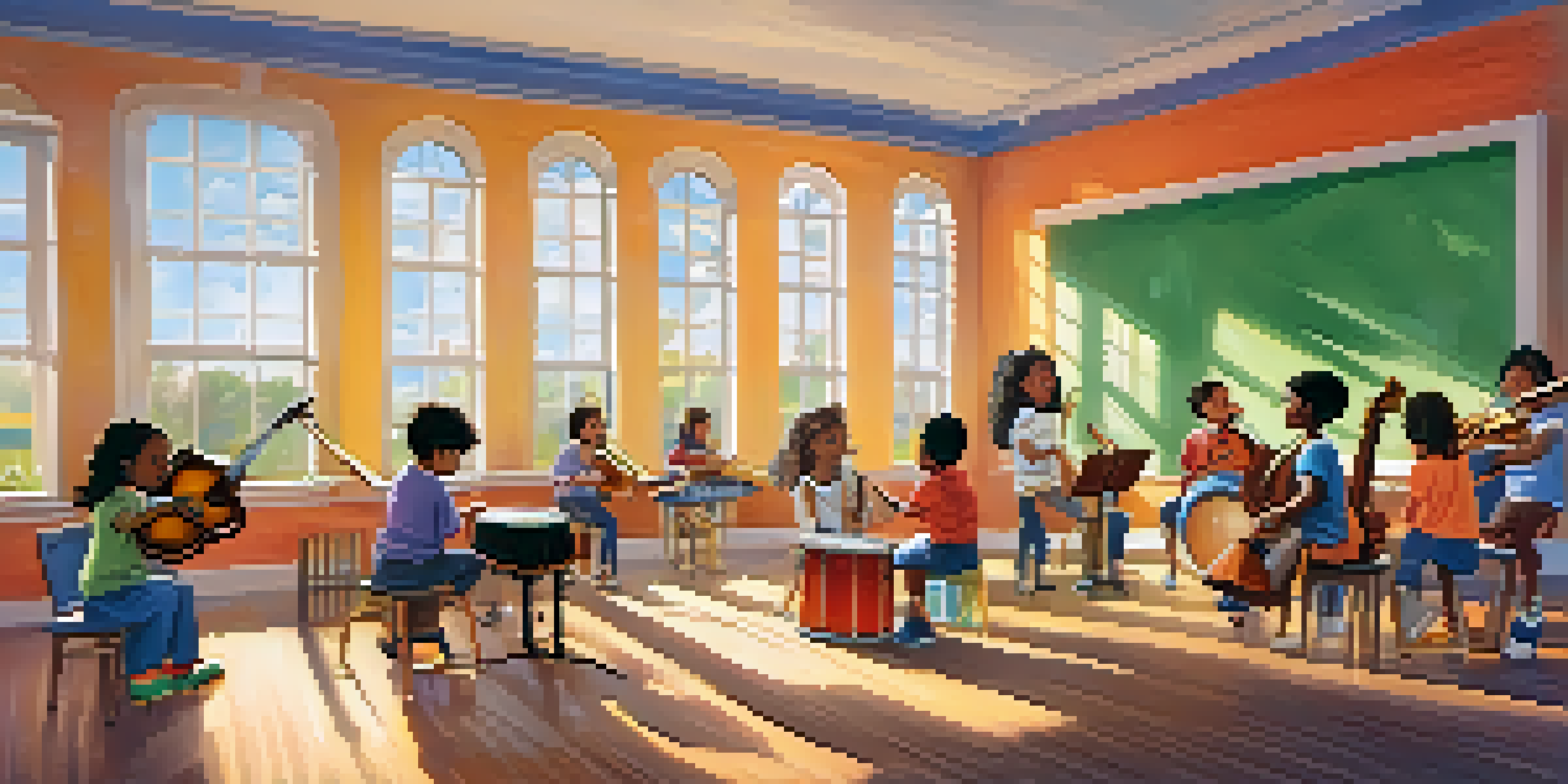Music's Role in Enhancing Spatial-Temporal Skills in Children

Understanding Spatial-Temporal Skills in Children
Spatial-temporal skills refer to the ability to visualize and manipulate objects in space and time. These skills are crucial for problem-solving, mathematics, and even music itself. Children with strong spatial-temporal skills often excel in subjects that require spatial reasoning, like geometry.
Music is the shorthand of emotion.
Imagine a child trying to solve a puzzle. They must visualize how the pieces fit together, which is a perfect example of spatial-temporal thinking. This cognitive ability helps them not only in academic settings but also in everyday tasks like navigating their environment.
Developing these skills at a young age can set the foundation for future learning and creativity. Parents and educators are always on the lookout for effective ways to nurture these abilities, and music may be one of the most powerful tools available.
The Connection Between Music and Learning
Music is not just a source of entertainment; it can also be a powerful educational tool. Research shows that engaging with music can activate different areas of the brain, facilitating learning and cognitive development. This is especially important for young children whose brains are still developing.

When children learn to play an instrument or engage in musical activities, they are not just having fun—they are also honing their spatial-temporal skills. For instance, reading sheet music requires the ability to visualize and interpret notes in both time and space, which translates to better performance in other areas.
Music Enhances Spatial Skills
Engaging with music activities helps children develop crucial spatial-temporal skills through visualization and coordination.
Incorporating music into learning environments can create a more dynamic and engaging experience. By making connections between music and academic subjects, educators can enhance children's overall educational journey.
How Music Activities Foster Spatial Skills
Participating in music activities such as rhythm games, singing, and playing instruments encourages children to develop their spatial skills. For example, drumming requires coordination and understanding of patterns, which strengthens spatial awareness. As children keep time with a beat, they are also learning to predict and anticipate movements.
The only way to do great work is to love what you do.
Learning to play an instrument like the piano involves not only finger placement but also understanding the spatial relationships between notes. This helps children visualize how sounds relate to one another in a spatial context, enhancing their cognitive abilities.
Furthermore, group music activities encourage collaboration, where children must navigate their position in relation to others. This teamwork aspect strengthens their spatial-temporal reasoning as they learn to synchronize with peers.
Music's Impact on Math Skills
There is a well-documented connection between music education and mathematics proficiency. The patterns and structures inherent in music closely resemble those found in math, making music an excellent gateway for children to grasp mathematical concepts. For instance, learning about rhythms can introduce fractions and proportions in a fun, engaging way.
Studies have shown that children who participate in music lessons often perform better in math tests compared to their peers who do not. This improvement can be attributed to the way music helps children understand and manipulate numerical relationships.
Music Boosts Math Proficiency
There is a strong correlation between music education and improved mathematics performance, as music introduces mathematical concepts through patterns and rhythms.
By integrating music into math education, teachers can help demystify complex concepts, making it easier for children to engage with challenging material. In this way, music becomes a bridge connecting creativity and analytical thinking.
Encouraging Music Participation at Home
Parents play a crucial role in fostering musical interest in their children. Simple activities like singing together, playing musical games, or encouraging instrument lessons can provide a strong foundation for developing spatial-temporal skills. These activities do not have to be formal; even casual interactions with music can have significant benefits.
Creating a musical environment at home can involve listening to various genres of music and discussing the feelings or stories conveyed through the rhythms and melodies. This helps children develop their listening skills and encourages them to express their thoughts and emotions.
Moreover, incorporating music into daily routines, such as using songs for counting or learning the alphabet, can make learning more enjoyable. The key is to keep the experience light and playful, allowing children to explore music in a way that feels natural.
The Role of Educators in Music and Learning
Educators are vital in recognizing the importance of music in enhancing spatial-temporal skills. By integrating music into the curriculum, teachers can create a rich learning environment that stimulates cognitive development. This approach not only benefits children academically but also nurtures their creativity and emotional expression.
Music teachers, in particular, are in a unique position to guide children through the intricacies of musical concepts while simultaneously enhancing their spatial reasoning. Incorporating activities that blend music with visual arts or movement can lead to a holistic educational experience.
Parental Support is Key
Parents can foster musical interest and spatial skills in their children through simple, enjoyable musical activities at home.
In collaboration with classroom teachers, music educators can design interdisciplinary lessons that engage multiple senses. This synergy can help children make connections between music and other subjects, reinforcing their learning and understanding.
Real-Life Applications of Spatial-Temporal Skills
The spatial-temporal skills developed through music extend far beyond the classroom. They are applicable in various real-life situations, including sports, visual arts, and even everyday problem-solving. For example, athletes often rely on spatial awareness to navigate their movements on the field or court.
Similarly, architects and designers utilize spatial-temporal reasoning when creating structures and layouts. The ability to visualize dimensions and relationships is crucial in these professions, showcasing how music's influence can permeate various career paths.

Ultimately, by nurturing spatial-temporal skills through music, we are helping children prepare for a wide range of future opportunities. These skills will serve them well, no matter where their interests or careers take them.